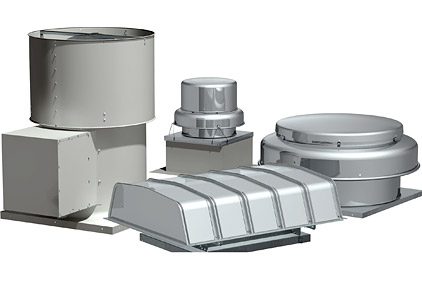 What factors prevent fans from not performing as specified?
What factors prevent fans from not performing as specified?There are numerous reasons why fans may fail to perform as specified, but first it is important to understand what defines acceptable performance. According to Air Movement and Control Association (AMCA) Publication 200, a fan installed in a ventilation system should expect a tolerance of +/- 7.5 percent for airflow (cfm). In other words, a fan which produces 1,000 cfm in a lab environment should provide a volume flow rate of 925 to 1,075 cfm when installed in a properly designed ventilation system. Volume flow rates which fall below this range are typically the result of variances in system static pressure or mechanical problems with the fan.
Common symptoms include:
• Obstructions in the duct system — closed dampers, closed registers, dirty filters, clogged coils.
• Obstructions in the fan inlet — elbows too close to the inlet, walls too close to the inlet.
• Duct design — improperly designed turning vanes, leaks in supply or exhaust ducts.
• Fan related — impeller running backwards, fan speed too low, impeller dirty or clogged, clearances between inlet cone and wheel cone are incorrect.
What information needs to be known in order to properly select a special coating?
To properly select a special coating for a fan, there are eight questions that should be answered.
1. What specific chemicals are involved?
2. What are the concentration levels of these chemicals?
3. What will the airstream temperature be?
4. What is the relative humidity of the airstream?
5. What amount of time will the fan see this environment? (continuous or intermittent)
6. What part of the country will the fan be located? (seaboard, snow country or desert)
7. What are the specifications or requirements for this coating?
8. What part of the fan is to be coated? (interior, exterior or entire)
What is the maximum roof pitch that a fan can be mounted to without correcting the curb for the pitch?
As a general rule, the recommended maximum roof pitch is 2:12 or 10 degrees from horizontal. Steeper pitches will increase the possibility of moisture infiltration into the building as a result of water splashing off the roof and entering the fan. For roof pitches greater than 2:12, it is recommended to have a pitched curb, which will allow the fan to sit level and not at an angle.
Courtesy of Greenheck Fan Corp. For more information, visit www.greenheck.com.
Publication date: 2/4/2013









